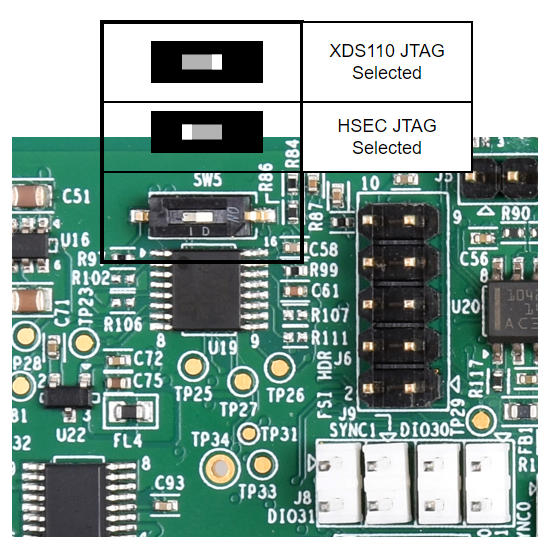SPRUJ09D March 2022 – September 2023 AM2631 , AM2631-Q1 , AM2632 , AM2632-Q1 , AM2634 , AM2634-Q1 , AM263P4 , AM263P4-Q1
- 1
- Abstract
- Trademarks
- 1Preface: Read This First
- 2Control Card Overview
- 3Board Setup
- 4Hardware Description
- 5References
- Revision History
- A E2 Design Changes
- B E1 HSEC Pinout Table
3.4 JTAG Path Selection
The AM263x Control Card allows for JTAG connections to the SoC through the on-board XDS110 or an external emulator via the HSEC docking station. A switch (SW5) is used to drive the select line of a mux (U19) to determine the JTAG path for the SoC. The following image shows proper switch position for SW5 for the two JTAG paths.
 Figure 3-8 JTAG Path Switch Position
Figure 3-8 JTAG Path Switch Position